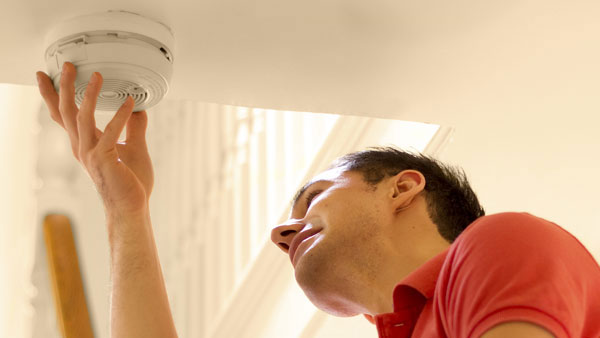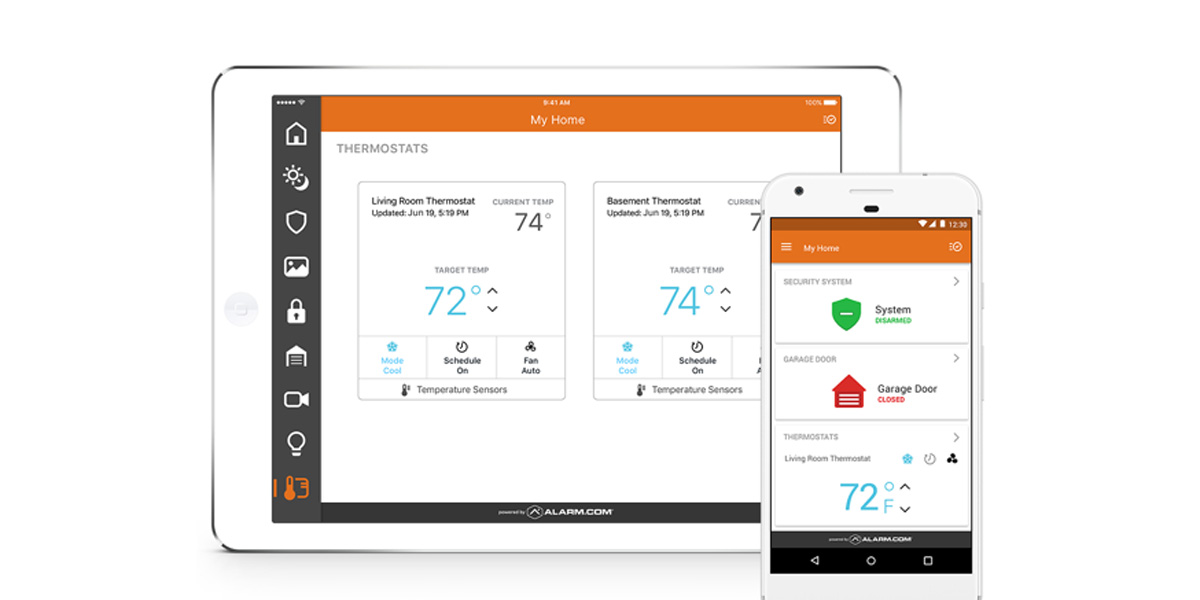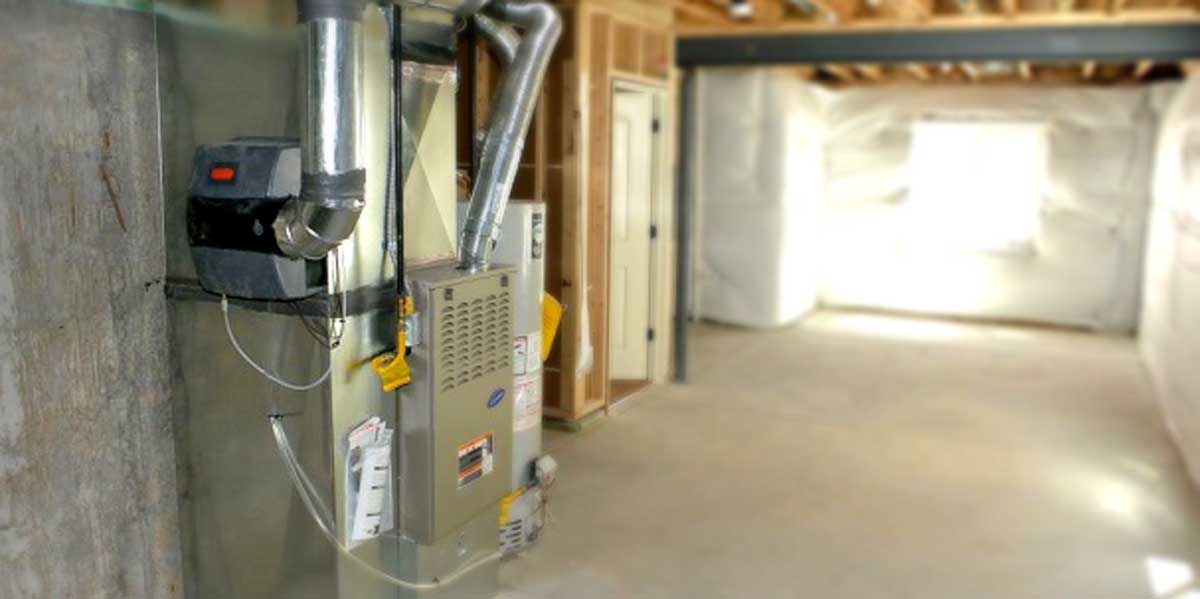As excited as we were for the start of summer, it’s already passed us by! From here on out each day will be getting a little shorter — and a little colder — until the winter season kicks in. Most of us have only felt the temperature changes slightly up to this point. However, the chilling winter temperatures will be here before you know it! It’s probably been a while since you’ve had to turn the furnace on. When that time comes things like energy costs, freezing pipes, and house fires will surely be on your mind. Before you turn on the heat, check out these cold weather tips for homes.
See also: Fire-Proofing Your Home: A Handy Guide
When Should You Turn on Your Heat?
Every home is different. In less insulated homes with older windows and doors, heat can quickly escape which causes temperatures to drop much faster than they would in newer homes. Typically when someone asks when to turn on the heat, they’re trying to find a balance between comfort and energy savings. So when trying to decide if it’s time to turn the heat on, consider this:
The U.S. Department of Energy says that heating your home typically accounts for more than 40% of your utility bill. So, if cost savings are important to you, you should avoid turning on the heat too soon. Once the heat is on, it’s recommended to keep the thermostat as low as is comfortable while you’re home, and dropping it to as low as 55° when you’re sleeping or away. As a general rule of thumb. If it’s colder than that, turn on the heat.
Follow These Home Tips Before the Weather Gets Cold
The biggest risks that homeowners face come when temperatures get too cold typically have to do with fires, freezing pipes, or energy costs. We’ll show you how to deal with all three. Kicking on the furnace poses a fire risk, and freezing pipes can occur even in homes that are well-insulated. That’s why it’s important to make an effort in early fall of each year to prepare your home for the colder weather ahead.
To Prevent Furnace Fires
According to the National Fire Protection Association, over 350,000 house fires occur every year in the United States. Over 15% of these are caused by heating equipment like boilers and furnaces! Not only is keeping a maintained furnace important for saving energy, it could save your home!
Inspect Your Furnace
You should have your furnace inspected by an HVAC professional every year. Furnaces use fuel like natural gas, oil, or propane — all of which are highly flammable. A gas leakage could expose your home to fire risks and unsafe levels of carbon monoxide.
Clean Your Fireplace and Chimney
Wood burning fireplaces are a delightful way to bring your family together and also heat your home. If they aren’t properly cared for, however, they can pose a serious fire hazard. The Chimney Safety Institute of America recommends chimneys and fireplace be swept at ⅛” of sooty buildup. Too much soot building up in the chimney cause a fire that spreads.

Test Smoke Alarms and Replace Batteries
Testing smoke detectors is one of the simplest, but most overlooked fire safety measures. The U.S. Fire Administration says that smoke alarms should be tested every month. Batteries should then be replaced every year. If you have monitored smoke detectors through your alarm company, many of these are often self-testing. Contact your alarm company to see if yours are self testing or if you should be checking them monthly.
To Prevent Freezing Pipes
Sometimes the risks of house fires are overlooked, but every homeowner thinks about freezing pipes when winter rolls around. When water freezes it expands, which could cause pipes to burst. Bursting pipes are one of the most common causes of property damage, costing people thousands of dollars every year says the American Red Cross.
Drain Water from Outdoor Lines
Drain water of pipes in uninsulated areas of your home such as ones that run out to an exterior hose or outdoor faucet. Without the excess water in these pipes, you will leave room for the water to expand when it freezes.
Add Insulation
If you’re unable to shut off the water and drain these pipes, you can always add insulation using a pipe sleeve or heat tape. This can make all the difference in areas that might be exposed. If the weather is very cold, you could even allow the water to drip slightly to help prevent it from freezing. A little insulation goes a long way, but depending on the temperature, it might only be a short term fix.
Use a Smoke/Heat/Freeze Detector
A furnace malfunction can quickly cause home temperatures to drop. If you’ve ever had to hire a late night HVAC professional, you’ve experienced this first hand. When you’re home, you can do things such as run the water while waiting for repairs to prevent freezing. However, if you’re away on vacation, you might not know of the malfunction until you come home to a chilled home — and then it’s too late. A smoke/heat/freeze detector separates all three functions. So, you can be notified on your phone of rapid rises and falls in temperature as well as smoke.
To Prevent Ridiculous Energy Costs
Utility bills spike when the weather gets colder. Even when we wait until the last possible moment to crank up the heat, it’s still an added expense that everyone wants to avoid. Fortunately, there are a few things you can do now that will cut your energy costs significantly come winter.

Install a Connected Thermostat
Connected thermostats are programmable and can be controlled from your smartphone. They are smart. So they can turn down when you’re away and automatically adjust for comfort when you come home. On average, connected thermostats save our customers $10-$15 a month in energy costs — the energy efficiency is backed and tested by Energy Star.
Seal Drafty Windows
Older windows and doors can warp from years of use which causes cold air to leak through. Use caulking or weatherstrips around your windows to seal these gaps. You can also purchase window insulation kits to seal the entire window with plastic wrap. This not only helps save you money, but it’ll stop that draft and make the room feel significantly warmer.
It’s the Best Time to Prep Your Home
The best time to prepare for winter is in early fall before the temperatures get too cold. Just like you try to tackle all of your home renovation projects in the spring before it gets too hot, you have to avoid the elements. Once winter rolls around, you’ll be glad that you took the time to prepare your furnace, your pipes, and your windows. When the utility bill comes around — you’ll see the reward for your hard work!
Know someone who just moved into a new home? Share this article with them to help get them ready for their first winter!
